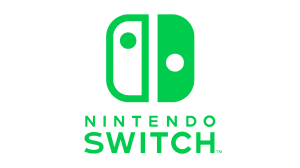In a game with as many nuanced characters as Larian Studios’ Baldur’s Gate 3 has to offer, it’s certainly hard to select favorites and even more difficult to say which of the roster has more layers to peel back before passing judgements as to who the most complex character in the game is. While this statement is true, a character that fairly unanimously seems to receive high praise for its multi-faceted writing and portrayal is one who is shown in multiple physical forms throughout the game – from flashes of his life as the founder of the city of Baldur’s Gate, to the disguise as the player’s Dream Visitor, and ultimately the mindflayer inside the Astral Prism.
Videos by ComicBook.com
The Emperor, as portrayed by Scott Joseph, can be quite divisive amongst the RPG’s playerbase, but it cannot be said he’s not one of the absolute icons of the game, and one that receives quite a bit of attention in fan works and discussion. Given there are so many different layers to the character there are many different interpretations of him, and it’s on a fairly case-by-case basis as to whether or not players like him, love him, or want to get rid of him as soon as they can. Despite this, The Emperor is an icon for the game and for the larger Dungeons & Dragons IP as a fearsome mindflayer, and it’s for this reason he finds himself on this year’s Monster Manual.
In interviewing Dungeons & Dragons‘ Art Director Josh Herman at this year’s Gen Con event, ComicBook inquired as to how much of an impact Baldur’s Gate 3 had on the upcoming edition of the Monster Manual, centered on The Emperor’s cover.
“We’re not going to see a ton of BG3 stuff in the Monster Manual in general. It came out late enough that we were in development pretty far on a lot of things,” Herman responds. “I put a hundred plus hours into BG3, so I was also a big fan. But the alternative cover, that was also a good way for us to just show that this is all D&D: if you want to play BG3, and you want to play on tabletop, it’s the same. This is the same world, this is the same game.”
While Herman says Dungeons & Dragons players won’t see a ton of influences or Easter eggs from Baldur’s Gate 3 in the Monster Manual as a whole, we point out that there’s plenty of other D&D media to draw inspiration from, including from the early 1980s cartoon. Without going too far into the territory of spoiling things for players who want to be surprised by the Monster Manual’s pages, Herman confirms that there will be more.
“It would be odd as a player, to see something and experience it here in something else, and then go into the core game, and be like, ‘I don’t recognize any of this.’ You know what I mean? I think it makes sort of that connection of, this is the same world. If you liked it over here, you’ll like it over here too. And this is the same play space that we all get to play in,” the Art Director states. “So, yes, in the way that we want to make it feel like a bigger world, that it’s all connected in that way.”
“If you like something in one medium, you’ll like it in the other one, I think that’s the goal. But not to the level that it’s going to get a super meta in-world joke where you have to read every one of our things to be up to the date with it. If that makes sense. So, more of a aid for players, honestly, than it is trying to create the metaverse or whatever of D&D.”








